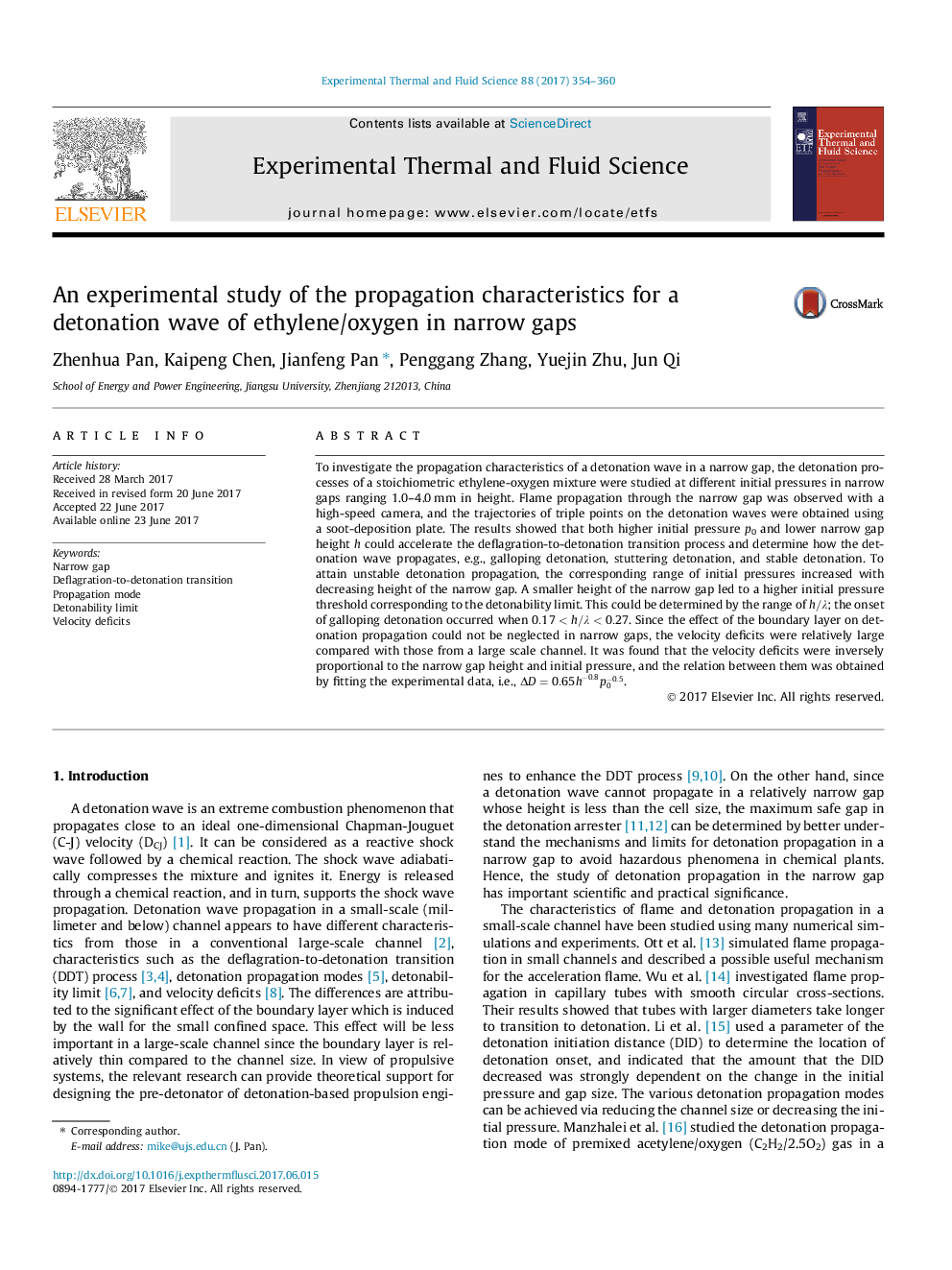| Article ID | Journal | Published Year | Pages | File Type |
|---|---|---|---|---|
| 4992589 | Experimental Thermal and Fluid Science | 2017 | 7 Pages |
Abstract
To investigate the propagation characteristics of a detonation wave in a narrow gap, the detonation processes of a stoichiometric ethylene-oxygen mixture were studied at different initial pressures in narrow gaps ranging 1.0-4.0 mm in height. Flame propagation through the narrow gap was observed with a high-speed camera, and the trajectories of triple points on the detonation waves were obtained using a soot-deposition plate. The results showed that both higher initial pressure p0 and lower narrow gap height h could accelerate the deflagration-to-detonation transition process and determine how the detonation wave propagates, e.g., galloping detonation, stuttering detonation, and stable detonation. To attain unstable detonation propagation, the corresponding range of initial pressures increased with decreasing height of the narrow gap. A smaller height of the narrow gap led to a higher initial pressure threshold corresponding to the detonability limit. This could be determined by the range of h/λ; the onset of galloping detonation occurred when 0.17
Related Topics
Physical Sciences and Engineering
Chemical Engineering
Fluid Flow and Transfer Processes
Authors
Zhenhua Pan, Kaipeng Chen, Jianfeng Pan, Penggang Zhang, Yuejin Zhu, Jun Qi,
